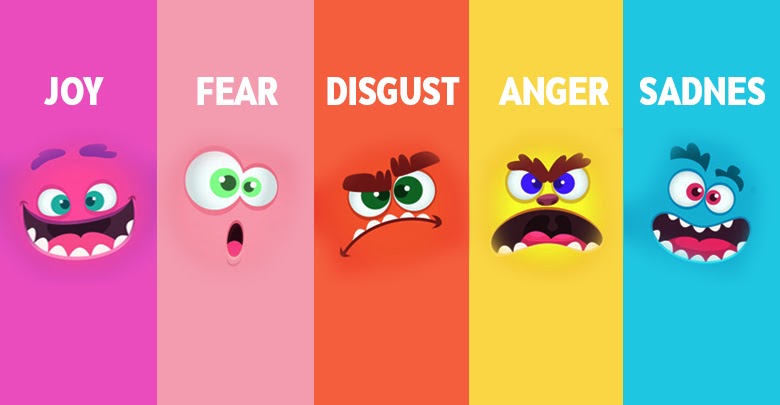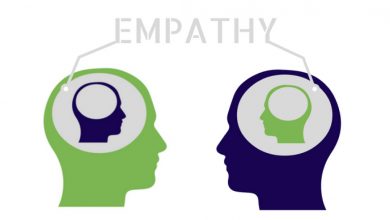Don’t shoot the messengers
It’s natural to feel uncomfortable and not know how to deal with emotions, particularly the negative ones, in ourselves or others. “Emotions” is not a topic covered in traditional education, and yet they play such an important part in our lives. Since we usually fear what we don’t know, this article aims to shed some light on what the negative emotions are and what they mean, and to know that negative emotions don’t necessarily need to have negative repercussions especially if they are handled well.

Why did I choose this tool? My upbringing was one that generally vilified negative emotions, particularly anger and disgust, and glorified the positive emotions such as happiness, contentment and love. What I came to understand later on in life is that the negative emotions, including anger and disgust, are actually part and parcel of a life of happiness and contentment, and are in fact vital protection mechanisms that are naturally ingrained in us, similarly to how we feel physical pain when something’s wrong in our body, and this is a clear signal that something is wrong and needs attention. The pain is a warning system that tells us to pay attention to a problem we wouldn’t be aware of otherwise, and negative emotions have the same function. This realization led me on a long and fascinating journey to understand emotions better, both the “negative” and “positive” ones, and to eventually specialize in emotional fitness.
How does this apply to being a trainer? Being a trainer and working with youth involves inevitably dealing with topics that can provoke strong emotions in participants. Topics like racism, teambuilding or even learning to learn have the potential to touch participants and trigger emotions that we can’t predict, and that we need to be prepared to handle. When negative emotions arise, being able to handle it with skill, sincerity and focus on the learning outcome can make all the difference in a training. Emotions can either block learning or be a learning catalyst, since the things we learn while experiencing a strong emotion are those that we remember for the rest of our lives.
Main content:
The movie “Inside Out” by Pixar is interesting and quite accurate in terms of cognitive, developmental and clinical psychology. It depicts what are considered to be the primary emotions – Happiness (Joy), Sadness, Fear, Anger and Disgust. Psychologist and scientist Paul Eckman is known for his work on emotions and micro facial expressions.
The movie is about an 11-year-old girl, Riley, originally from Minnesota, who moves to San Francisco with her parents. The leading characters of the movie, however, aren’t Riley and her family, but Riley’s primary emotions – Happiness (Joy), Sadness, Fear, Anger, and Disgust.
Of all 5 of Riley’s emotions, Joy seems to be the leader. She keeps the others in check but reminds the viewers that all of them have an important function. She states that Disgust keeps Riley safe from being poisoned, Fear keeps her safe from a catastrophe by imagining worst case scenarios, Anger protects her from others and also allows her to be a better hockey player, while Joy ensures that Riley is happy. However, Joy fails to see the importance of Sadness and tries to shoo Sadness away from anything Riley-related, forbidding this emotion in every way possible. She even draws a circle on the floor and makes Sadness stay inside, forbidding her to leave the circle or to touch any of Riley’s memories, so as not to taint them with sad memories.
As if Riley’s mind trying to keep Sadness at bay wasn’t enough, Riley’s parents put additional pressure on her, especially when her mother asks her to “keep smiling” for her dad. Essentially, Riley’s mom, without meaning to do so, communicates to Riley that being sad about the move was not ok and that she needs to pretend to be happy to support her father through this.
Unfortunately, Joy’s good intentions backfire when Riley is unable to receive the support she so desperately needs to help her with adjusting to her new environment. By being unable to experience her sadness about all these changes and pretending that she was ok, Riley ends up being angry, anxious, and irritable, getting into a fight with her parents and her best friend, before shutting down altogether.
What message does this movie send to its viewers?
Many, actually, but perhaps the most important one is this – our emotions are all important, every single one of them. They all serve an important function and we cannot selectively feel some of them. It’s an “all-or-none” deal. If we numb sadness, we also numb joy. We need to openly experience all our emotions, and that includes sadness, as painful as it may be sometimes. Sadness enables connection, when we see someone else feeling sad, we might feel sad too (this emotion is called empathy) and might want to alleviate their sadness (this is compassion). When we stay with this individual and share our emotions together, the resonating effect can produce a healing experience.
The movie also shows that everyone experiences these emotions, as they are, universal. This demonstrates a psychological concept of common humanity, or the idea that other people are just like us. They might struggle with the same emotions, insecurities, heartbreaks, and neuroses as we do, further validating our internal experiences.
Meanings and opposites of negative emotions
Here are some of the meanings that our negative emotions can have:
Anger – Anger is trying to protect your boundaries and the boundaries of those you love, and prompts you to protect yourself and others from being treated unfairly/unjustly.
Sadness – Sadness is trying to tell you that you have lost something that was important to you, a precious item, an opportunity, a relationship or a person, and that you need some time to process this and allow yourself to let it go.
Fear – Fear is trying to tell you that you are in physical or psychological danger, and it activates the ‘fight or flight’ response in you, in order to protect you from this danger.
Guilt – Guilt is trying to tell you that you have done something (or haven’t done something) and you regret it and feel bad about it, because it doesn’t reflect who you want to be.
Disgust – Disgust wants to prevent you from being poisoned physically, socially or psychologically so it listens to all your senses (smell, taste, sight, hearing, touch) that are telling you “this is not something you want”.
Boredom – Boredom is trying to tell you that what you’re currently doing doesn’t really interest you or motivate you enough to get your attention and engagement.
Tiredness – Tiredness is not necessarily an emotion, but it is a state of being that is trying to give you a message. It is trying to tell you that your mind, your emotions and/or your body need to rest. Proceeding beyond this point can lead to sloppiness at best and costly mistakes at worst.
The opposite of each negative feeling can be described as follows:
The opposite of anger is surrender
The opposite of sadness is joy
The opposite of fear is safety
The opposite of guilt is fulfillment
The opposite of disgust is pleasure
The opposite of boredom is engagement
The opposite of tiredness is restfulness
The truth is that there is actually no such thing as a negative emotion, since all emotions are messengers and are there to tell us something. The only part that can be negative or positive, for ourselves or others, is how we choose to respond (or not respond) to our emotions. There are 2 unhealthy extremes to which we can go, when dealing with emotions: the first is suppressing our emotions completely and the second is always giving in to them and reacting without a second thought. Only the 3rd way, understanding our emotions and reacting to them appropriately, is actually healthy and will bring positive results.
When we feel positive emotions, it means that what we are doing is good and right for us and the message is to keep doing it. For instance, if you feel guilty when you don’t exercise and you feel fulfilled when you do, it’s a clear sign that your mind and body want and need exercise to be well and it’s something you should prioritize.
Negative emotions are just messengers, they are not a bad thing themselves, but the result of it. Guilt is not a bad thing, in fact it’s a good thing, because someone who never feels guilt may have psychopathic tendencies. It’s the thing that you have (or haven’t) done that is causing you to feel guilty. That is the actual problem and the guilt is just nudging you to deal with it.
How to handle negative emotions
When we feel any negative emotion, we can take the following steps to understand it and to transform it from negative to positive:
- What am I feeling?
Taking the step to name how we feel first of all is an often forgotten, but essential step in this process.
Ex: I am feeling angry.
2. Accept and appreciate the emotion
So often we try to hide or suppress the negative emotions, particularly the “nastier” ones such as anger. This does only harm to us and others, and remember the emotion is not to blame it is merely a messenger.
Ex: I accept and appreciate the fact that I’m feeling angry, and that the anger has a message for me.
3. What message is this emotion trying to send me?
We don’t need to suppress the emotion because once we understand the message and we take the appropriate action or change our perspective accordingly, the negative emotion will go away on its own as it has accomplished its purpose.
Ex: This feeling of anger is trying to tell me that the way I was spoken to by my boss is in violation of my boundaries and my sense of right and wrong, and that I need to do something to prevent that from happening again.
4. Is it based on objective reality or could it be something I’m imagining?
Our emotions don’t know the difference between what is real and what is imagined by us. We will feel the same if someone actually disrespected us, as we will if we imagine someone has disrespected us, even if it’s not at all true. That’s why it’s up to us to differentiate what is true and what is merely our perception, so that our emotions can then respond more accurately to the situation. Sometimes we may need an outside opinion in order to do this, but the final decision about it should always be yours.
5. How do I want to feel right now instead?
Saying “I don’t want to feel this” doesn’t help, rather it’s better to focus on how we actually do want to feel and move towards that instead.
Ex: I want to feel joy, or peace, or love, or surrender.
6. What am I willing to do in order to feel the way I want?
If we don’t do anything to change the cause for the negative feeling in the first place, it either won’t go away or it will come back very quickly when the situation repeats itself. That’s why it is important to address the situation directly, if there is a real situation to address.
Ex: I am willing to have a conversation with my boss and tell him that I need him to speak to me in a different way (add details), if we are to continue to work together successfully, and to tell him how important that is to me.
Ex: I’m willing to let this go and go for a walk with a friend instead, because I don’t think that my boss intended to disrespect me and I just need to do something to shift my mood.
7. Change the state, change the behavior or change the circumstances and the negative emotion will go away on its own.
Take the action you decided on above, whether that action means addressing the situation directly, changing something about yourself and your own behavior and perception, or changing your own state (mood) in order to feel better.
By understanding these steps, we can apply them not only to ourselves and our own emotional lives, but we can also apply them to different extents with others, whether it’s a friend, a colleague, a significant other, or a participant in a training. Most people don’t have the knowledge of how to deal with their own emotions, and even if they do, it can be difficult to implement the knowledge, while experiencing the emotion. When you are outside the situation, you can take them through these steps (or whichever ones you find appropriate for the situation) and take them on a genuine path to feeling better, rather than resorting to say for instance “don’t be angry” which will only exacerbate the problem.
Learn to deal with negative emotions the same way you would with physical pain. If it’s there it means something is wrong and needs to be tended to. We would never vilify someone for being in physical pain, we would try to help them to solve the problem, right? Do the same with emotions and you will be on the way to creating an emotionally healthier and happier environment for yourself and others.
Reflection questions:
What is my natural response to negative emotions?
Why do I respond this way? In what way did my upbringing influence this?
Are there any emotions that I have a particularly hard time with (ex: maybe anger is fine but sadness is not, and vice versa)? If so, why do I think that is?
How do I respond to emotions, particularly the negative ones, in other people?
Do I need to improve in understanding my negative emotions and responding to them appropriately?
Do I need to improve in understanding the negative emotions of others and responding to them appropriately?
If so, what concrete steps can I take to do so?
Exercise
The next time you experience an intense negative emotion, go through the above-mentioned process in order to change the negative feeling into a positive one.
- What am I feeling?
- Accept and appreciate the emotion
- What message is this emotion trying to send me?
- Is it based on objective reality or could it be something I’m imagining?
- How do I want to feel right now instead?
- What am I willing to do in order to feel the way I want?
- Change the state, change the behaviour or change the circumstances and the negative emotion will go away on its own.





